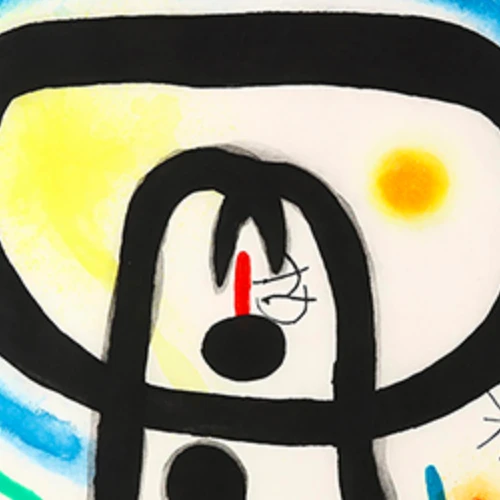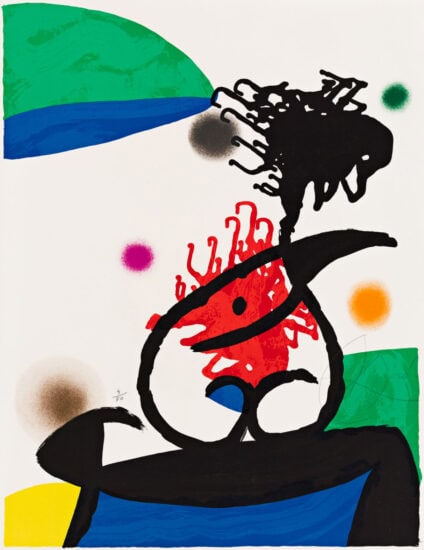The close relationship with Fernand Mourlot resulted in the creation of over one thousand Joan Miró lithographic print editions. His process of automatic drawing, allowing the hand to move randomly on the surface, leaving the artwork to chance, enabled him to create works that were genuine reflections of himself, an integral part of his popularity. A popularity that still remains today as they make for 91% of all of his works bought on the market, with a complete set of Le lézard aux Plumes d’Or (1971) selling for over $147, 510 in 2002 from Christie’s.
A true master of the printmaking medium, Miró received the Grand Prize for Graphic Work at the Venice Biennale in 1954, and his work was included in the first Documenta exhibition in Kassel the following year. In 1958, he was given a Guggenheim International Award for murals for the UNESCO building in Paris and the following year he resumed painting, initiating a series of mural-sized canvases. During the 1960s, he began to work intensively in sculpture and was particularly captivated by glass as is evidenced in his commissioned mural Personnage Oiseaux (1972-1978) which combines one million pieces of marble and Venetian glass. A man whose art rose to international acclaim with the help of the Surrealist movement, Miró was honored with many retrospectives during his lifetime and worked until he passed away of heart disease in December 25, 1983, in Palma de Mallorca, Spain.



